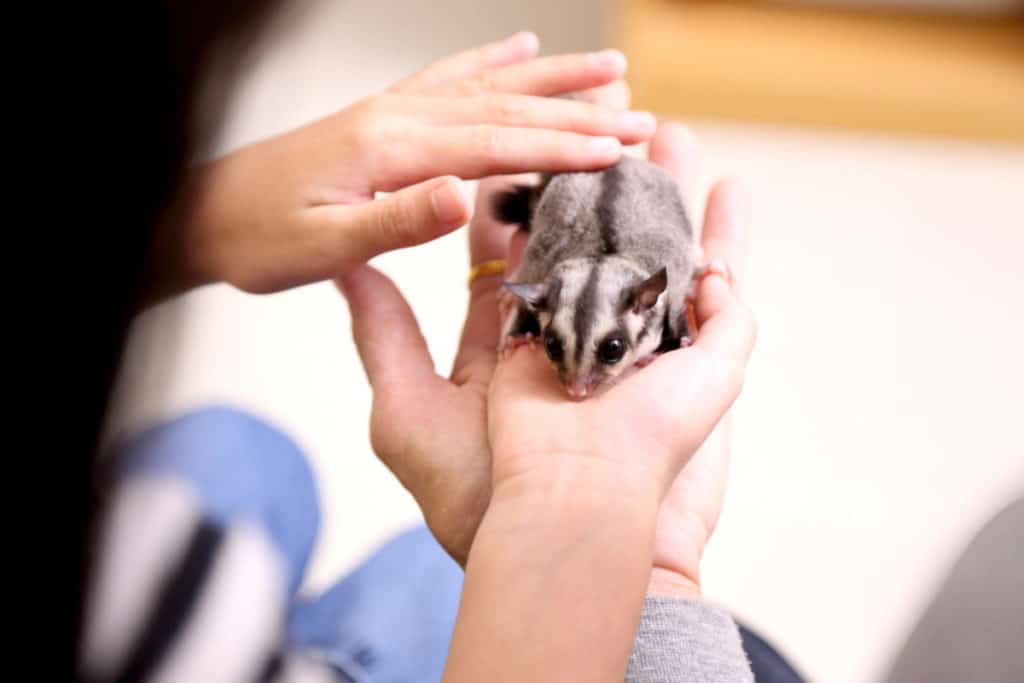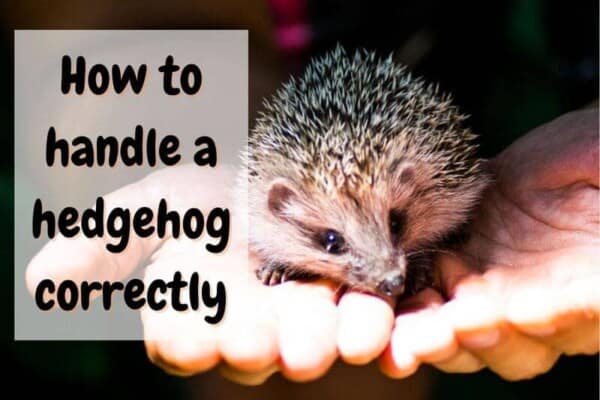Sugar gliders may bite for several reasons, many of which need to be explained. Since sugar gliders are fairly skittish little animals, it’s their nature to be wary virtually all the time.
We’ll cover the basic reasons why sugar gliders tend to bite and what you can do to train them properly. It all starts with training them while they are young, and with being incredibly patient. This guide will also inform you of their nature and how to tame a sugar glider through proper handling and care.
Under what circumstances do sugar gliders bite?
Sugar Gliders’ natural habitat is the coastal tree-lined environments in Australia and New Guinea. They forage at night, while they’re continually being stalked by snakes, owls, feral cats, and foxes. Because of this, they will bite and attack anything out of fear if they feel their life is threatened. So it does take time to train a sugar glider so they become more familiar with their owner.
Owning a sugar glider can be a great experience but you will notice that they do bite for various reasons. Not all of these reasons are for defense as you will find out since they are also showing emotions or reactions. Here is a list of the top reasons why they will bite.
1. Biting when scared or threatened
New babies that are unfamiliar with you will no doubt have a tendency to bite. This will be especially noticeable when you first start to handle them. Let your little sugar glider get used to clean hands; this way they learn your scent and will be more familiar with the way you smell to them.
2. Biting because your hands smell weird
If you have been handling anything that your sugar glider is not used to, they might bite you as a result. This can include petting other animals, picking up any kind of food, or touching objects that give off some kind of residual scent. Before handling your glider, always wash your hands with unscented hand soap.
3. Grooming and testing your skin
Sugar gliders are going to notice the surface of your skin is a lot softer than their living area happens to be. Even after you get them used to being handled, they will continually test your skin for various reasons. This can include a grooming ritual that often involves light biting or scraping to clean a certain area.
4. Biting when showing affection
Oddly enough, a sugar glider does show affection by giving love bites that won’t hurt you in any way. It’s just something that they do when they want to get your attention as well. If it comes down to getting a treat, try not to distract them with a treat or they will do this more often.
5. More biting during the teenage phase
These little creatures can be nippy for plenty of reasons and they have a teenage period where they are starting to show more aggressive behavior. They do grow out of this phase and eventually chill out later.
How often do sugar gliders bite?

Most pocket pets such as rats, mice, hamsters, and gerbils might bite if you don’t handle them carefully. When it comes to how often they bite will also depend on how much training and handling you get your sugar glider used to.
There is also how well they are familiar with the scent of your skin. Anything threatening could cause them to bite, such as quick hand movements. So how often sugar gliders bite also depends a lot on the way you handled them and how bonded you are to them.
Are sugar gliders aggressive by nature?
These creatures do have a touchy disposition, however, they can be sweet animals if you take the time to train and handle them. Once they reach a certain age, they make sweet pets that are excellent pocket buddies.
The real secret is getting them young enough to train properly. If you have not had previous experience with small animals, it will take a week or two before they start bonding with you. You should always be careful and patient as much as possible since they can be aggressive at times, especially when tired or scared.
How strong is a sugar glider bite?
Getting bit by a sugar glider is going to be on a sliding scale, so here is what you need to know about sugar glider bites.
1. Love bite
There will be times when your sugar bear just wants to show you some affection. They will bite lightly and let go right away, so most times you don’t feel they are biting you at all. Rather than licking, gliders like to bite softly to show how they are feeling content or happy.
2. The pinch
This feels just like a pinch and is no immediate cause for alarm if you have ever been pinched by a tiny mouth. More than likely it will feel no more painful than pinching your own skin with tweezers.
3. Ouch!
This is obviously where you feel the bite and it can be painful for a moment. You might even have your skin pierced from the tiny teeth. At this point, you will need to clean your bite and put on a band-aid.
Do sugar gliders like to be held?
The biggest secret is the amount of handling that you give your sugar glider. Without daily handling, they will start to be more prone to biting. This is why you need to have a pouch that hangs around your neck.
When you’re handling a glider, it becomes easier to move from one hand to another. This also helps in the bonding process so they become used to being held. What they like is keeping busy, so in a sense, they will like being held more often after this.
Two Tricks To Tame a Sugar Glider To Stop Biting
1. Use licking treats
Sugar gliders are little sapsuckers in their natural environment so they love sticky sappy food. Put this on your finger if they bite, this distracts them and they will instantly learn to lick your finger. After a while of handling them, they will be happy to lick a sticky finger and be less prone to bite you.
2. The windy trick
In general, sugar gliders don’t like anything blowing air on their head, so if they bite you, you can puff some air on them. You may repeat this every time they bite hard. You can also add a ‘Pssst’ sound. Since they will learn that the sound you make means they did something wrong, they will stop biting.
Is a sugar glider bite dangerous?
Not every animal is a carrier of diseases or natural bacteria, but depending on where your sugar glider was bred, you have to be careful. Some breeders are not being too clean and unknowingly have adult sugar bears that pass these illnesses to their young. They are not harmful to a sugar glider, but you should be aware they might pass these illnesses onto you:
1. Salmonella
We all know how bad the problem with salmonella poisoning is. This is hard to clear out from their system so keeping your hands clean after you handle sugar gliders is important. It goes without saying that it’s often common for warm and cold-blooded animals to carry salmonella.
2. Leptospirosis
This is another type of bacteria that’s spread through urine and is passed along through poor breeding. You can even be exposed to this if you don’t clean the cage and bedding using the proper methods. You will know you get sick anywhere between 2-30 days and will start having flu-like symptoms.
This illness needs to be treated by a doctor easily with antibiotics. If you own a sugar glider, you need to clean its cage using special organic cleaners.
Do sugar gliders also bite each other?
It’s part of the nature of gliders to fight and play with each other. When this includes biting, it can be from two males fighting for dominance when they reach their teenage years. This is notoriously a problem if you have a new sugar glider introduced to an older glider.
The most common problem is that you simply have a situation where two gliders don’t get along with each other. You will have to keep them separate from each other so they don’t have serious injuries. Bites will need treatment with Neosporin gel that helps their wounds heal without infections.
References and further reading:
- Healthy pets, healthy people: How to avoid the diseases that pets can spread to people, Paediatr Child Health. March 2000
- Sugar Gliders – Owning, Rick Axelson
Contents
- Under what circumstances do sugar gliders bite?
- How often do sugar gliders bite?
- Are sugar gliders aggressive by nature?
- How strong is a sugar glider bite?
- Do sugar gliders like to be held?
- Two Tricks To Tame a Sugar Glider To Stop Biting
- Is a sugar glider bite dangerous?
- Do sugar gliders also bite each other?













